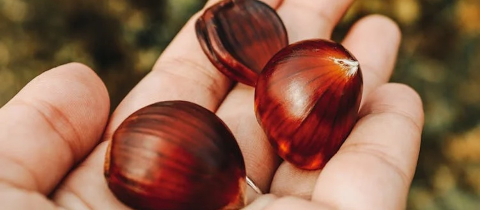In 1862, over 6 million visitors flocked to the “Great London Exposition” where they were astounded by the electric telegraph, watched an early refrigerator make ice, gawked at Charles Babbage’s “analytical engine,” a forerunner of the computer, and were amazed by a display of “Parkesine,” the world’s first commercial plastic.
Parkesine was the brainchild of British inventor Alexander Parkes, but like most inventions, it capitalized on previous discoveries by others. In 1846, Swiss-German chemist Christian Friedrich Schonbein discovered that treating cotton with a mixture of nitric and sulphuric acids produces a highly combustible substance he named pyroxyline. He didn’t realize it at the time, but he had converted cellulose in the cotton into highly flammable nitrocellulose. As the likely apocryphal story goes, he was working in his kitchen at home when he spilled the acidic mixture. He quickly grabbed his wife’s cotton apron to wipe up the mess and got a surprise after hanging it up in front of the fireplace to dry. The apron ignited and disappeared in a smokeless flash! Intrigued, he reproduced the reaction and found that the treated cotton readily dissolved in a mixture of ether and alcohol. When the solvents evaporated, a plastic material that could be shaped by hand, much like clay, was left behind.
Schonbein did not pursue this any further, concentrating instead on the flammability of the substance. This led to his developing “guncotton,” a material that in turn could be processed into smokeless gunpowder. He patented the process and hired an agent to try to commercialize it. Apparently, Parkes learned about pyroxyline from John Taylor, Schonbein’s British agent. It wasn’t the flammability that interested him, Parkes was more taken by the mouldable material that remained when the solvent from a solution of pyroxyline evaporated. He tried coating fabrics with the substance to make them waterproof and then became intent on molding the plastic into useful objects. The word plastic had appeared in the English language as early as the 17th century to describe substances such as clay that could be molded, but Parkes did not describe his material as a plastic.
Although the solid nitrocellulose was flexible, molding it into a desired shape was challenging. Parkes tried blending it with other materials and discovered that after softening with heat, a mixture of nitrocellulose and vegetable oil could indeed be molded. And mold he did. Parkesine, as the plastic came to be called, could be formulated into buttons, umbrella handles, and even insulation for telegraph cables. These were the objects that impressed visitors at the 1862 Exhibition. A guidebook described Parkesine as “a substance hard as horn, but as flexible as leather, capable of being cast or stamped, painted, dyed or carved.” Indeed, it seemed to be a miracle material, ready for commercialization.
Unfortunately, Parkesine did not fare well in the long run. The material distorted with heat, parts became warped, and customers discovered, much to their surprise, that their bracelets and combs were flammable. The Parkesine Company, founded in 1866, went belly-up just two years later. Nevertheless, Alexander Parkes deserves credit for producing the world’s first plastic. That credit, however, is contested by historians who point at John Wesley Hyatt in the U.S. as the inventor of nitrocellulose-based plastic.
Indeed, roughly at the same time that Parkes was establishing his company, Hyatt mixed nitrocellulose with camphor to form what he called “celluloid” which was indeed superior to Parkesine. Interestingly, Parkes’ notes mentioned that he also experimented with camphor but relied more on vegetable oils. Whether Hyatt knew about this is not clear and always claimed that he had discovered celluloid independently. What is clear, is that Hyatt went on to establish the successful Celluloid Manufacturing Company that produced a wide range of items from jewelry and toys to billiard balls. Indeed, it was a $10,000 prize offered by the Phelan and Collander Billiard Ball Company to anyone who could come up with a material to replace ivory that stimulated Hyatt’s research, culminating in the production of celluloid. For some reason, Hyatt never applied for the prize.







